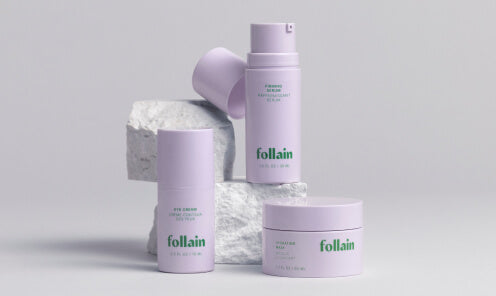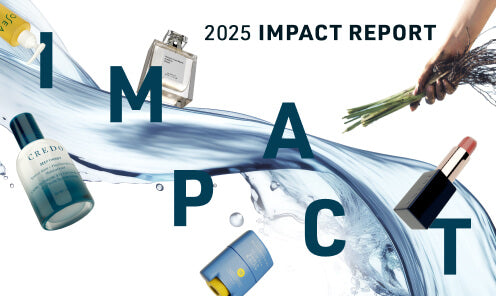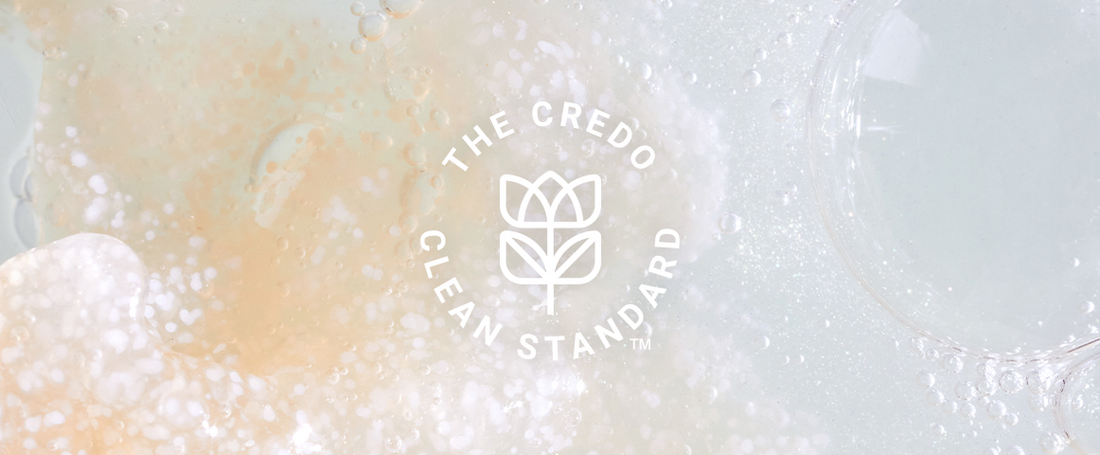By Mia Davis, VP of Sustainability and Impact, and Christina Ross, Senior Scientist
What is Clean Beauty?
Clean beauty—what does it really mean? While some may see it as a marketing term, for Credo, it’s our mission. Our commitment is embodied in the Credo Clean Standard™, setting industry-leading benchmarks for safety and transparency.
More than ever before, people are questioning what they buy and what they put onto their skin and hair. And people are making the connection that when the product washes off down the drain, and when the package is empty, what ingredients and materials make their way into the environment. In fact, a recent study showed that over 68% of consumers are looking for beauty products described as clean.
Many brands and retailers have adopted “clean beauty” as a way to show their products take into account safety (meaning free of potentially harmful ingredients) and sustainability (meaning created in a way that does as little harm to the environment as possible).
The beauty industry is under-regulated in the US, and the FDA–the agency that oversees skincare and cosmetics–has very little power to ensure products are safe, let alone sustainable. There are a couple of important legal rules, but for the most part, the industry is self-regulated. So “clean beauty” doesn’t have a legal definition–like most other terms and claims in our space. But in 2018, Credo clearly laid out what clean beauty means to us. The Credo Clean Standard™ is both a definition and a future-forward guideline. The Credo Clean Standard has come to serve as the bellwether for the clean products movement. Its foundation is The Dirty List®, a scientist-vetted list of over 3000 ingredients that Credo prohibits or restricts in products based on safety and/or sustainability concerns.
At Credo, clean goes deeper than The Dirty List®. The Credo Clean Standard™ requires brands to obtain documentation on ingredient sourcing, composition, and purity, and requires brands to conduct basic consumer safety testing (never on animals!) to ensure products are non irritating and stable. We also ask brands to be ready to back up all product and ingredient claims, and to be transparent about fragrance used in products (read more on our policy here). And, sustainable packaging is built into our definition of clean, too. Credo is the only beauty retailer with these broad and deep requirements.
Why does clean beauty matter?
Clean beauty matters because it promotes the use of safer ingredients, reduces environmental harm, and ensures greater transparency in sourcing and production. By prioritizing consumer safety and sustainability, clean beauty encourages better choices that benefit both people and the planet.
The Credo Clean Standard™ outlines requirements and best-practice guidelines on safety, ethics, and sustainability–all under the umbrella of transparency. Because without transparency in the supply chain and in formulation processes, how can any beauty stakeholders walk the walk on clean? As a key first step, Credo works with brands to consider the source of their materials prior to creating formulations. For example, we push brands to ask:
“Is the ingredient sourced from nature, synthetic, or is it a combination (which can be considered naturally-derived)?”
“Is there more than one source of this ingredient, and if so, is one source better for the people, communities and/or the environment?”
With sourcing, it’s important to remember that natural ingredients don’t always mean “safer” or “more sustainable.” Consider an example such as a botanical ingredient that may be sourced from an endangered rainforest.
Here is how we focus on our clean pillars, and questions we pose to the beauty industry supply chain:
Safety
“What do we know about the safety of the ingredient?”
“Does this ingredient present a risk to the user or the environment?”
We require that brands avoid high hazard ingredients.
We have required testing for microbiological contamination, preservative efficacy, and contamination testing (such as the heavy metals testing results we ask for.)
Sustainability
“Are there sustainability concerns from farming, mining, or production practices?”
“Does the packaging meet Credo’s Sustainable Packaging Guidelines?”
“Were materials shipped around the world during production/processing/sales?”When we know there are sustainability concerns around a particular ingredient, we ask brands to learn more about ingredient sourcing.
We created the Sustainable Packaging Guidelines in 2020 to eliminate the most wasteful or toxic packaging materials, and move our industry in a much more sustainable direction, encouraging smarter design, more recycled content, and honestly about packaging end-of-life.
Ethics
“Is this ingredient linked to unfair labor conditions or wages?”
There are many data gaps when it comes to paying workers and protecting communities and ecosystems. We’re raising our voices, asking for better standards and transparency.
Credo’s holistic definition of clean, and more importantly, our hard work to operationalize our Standard, have made us the leading clean beauty retailer. And we will continue to evolve The Credo Clean Standard™ when new data or innovations are available.
You can trust that our team of industry experts and scientists, and our deeply committed brands partners, have done a deep-dive into ingredient safety, and we ask the hard questions on sourcing, sustainability, and ethics.
--
More resources:
Sustainable Packaging Guidelines
Where to start with Clean Beauty? Here are the top categories to swap first.













